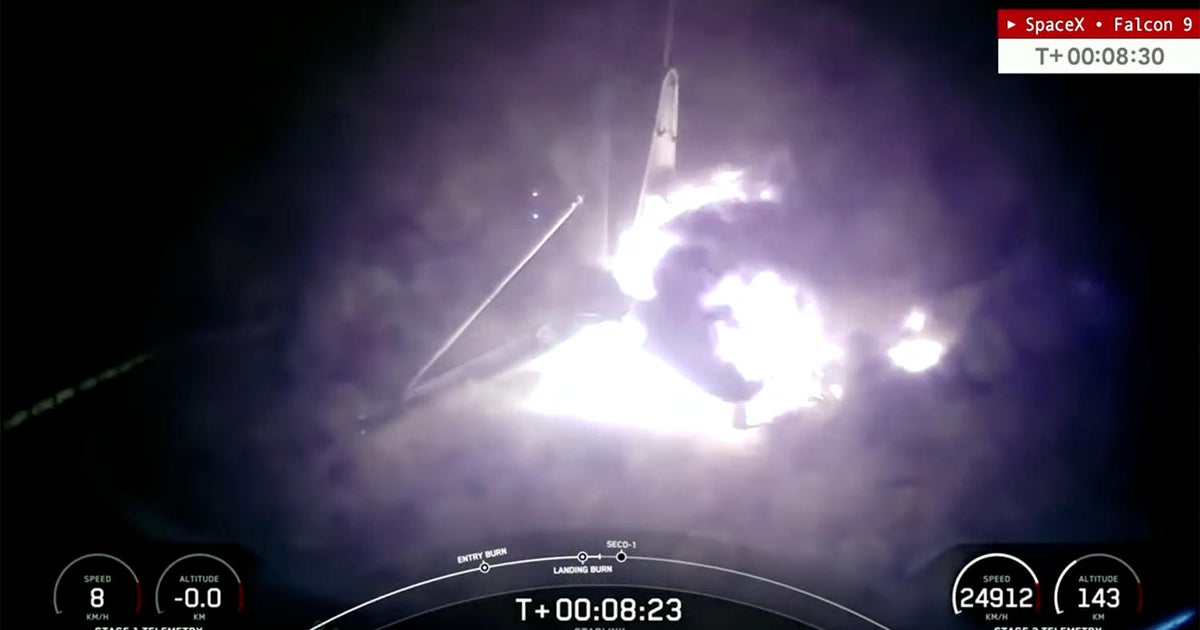Blue Origin launched six passengers, including a NASA-sponsored researcher and the youngest woman to fly in space, on a sub-orbital trip out of the lower atmosphere Thursday in the company’s eighth crewed spaceflight.
University of Florida researcher Rob Ferl, philanthropist Nicolina Elrick, adventurer Eugene Grin, Vanderbilt University cardiologist Elman Jahangir, American-Israeli entrepreneur Ephraim Rabin and University of North Carolina senior Karsen Kitchen blasted off from Jeff Bezos’ west Texas launch site at 9:07 a.m. EDT.
Powered by a single-stage, hydrogen-fueled rocket, the New Shepard crew capsule was propelled straight up and through a deck of clouds, disappearing from view as it was boosted to a maximum velocity of 2,238 mph before the launcher’s BE-3 engine shut down.
At that moment, the crew began enjoying about three minutes of weightlessness, along with spectacular views of the Earth below, as the capsule coasted up to an altitude of about 345,000 feet, or 65 miles, and then arced over to begin the long fall back to Earth.
NASA and the U.S. Air Force consider 50 miles to be the somewhat arbitrary “boundary” of space, the point above which an aircraft’s wings, rudder and other aerosurfaces are no longer effective. The internationally recognized boundary is 12 miles higher.
By either yardstick, the New Shepard capsule easily passed into the lower reaches of space as it arced through the high point of its trajectory.
After sending the crew capsule on its way, the reusable booster fell back to the Texas launch site, touching down safely on a concrete landing pad.
The New Shepard capsule took a bit longer to come down, lowered to the surface under three large parachutes for a relatively gentle touchdown at 9:17 a.m. From launch to landing: 10 minutes and eight seconds.
The crew members were ecstatic when they left the spacecraft a few minutes later, embracing family members and friends with broad smiles and exclamations.
Ferl is a professor at the University of Florida who carried out NASA-funded research during the New Shepard flight to learn more about how genes react during the transition to and from weightlessness.
“The ride was incredibly smooth; I was so impressed with the ride up,” Ferl said after landing. “But being there, the darkness of space, there’s no way to talk about it. There’s no way to talk about how impressive space is and the Earth below. The science went well, everything worked like it was supposed to. … It couldn’t have been a better experience.”
Kitchen, at 21 the youngest woman to fly in space, was equally excited, repeatedly hugging her father Jim, a University of North Carolina professor and veteran of an earlier Blue Origin flight in 2022.
“When she was a little girl, she told me definitively she was going to be an astronaut,” the elder Kitchen said before launch. “It’s emotional. It’s emotional to see someone that’s wanted to go to space and it’s actually a dream come true. To be able to have that dream and have it fulfilled is amazing.”
Blue Origin builds and markets the New Shepard rocket and spacecraft for space tourism, human-tended research and unpiloted experiments. The company also is building a large orbit-class rocket, called the New Glenn, that will compete with SpaceX’s Falcon-family of boosters, designed to deliver satellites and other payloads to orbit.
The first New Glenn rocket is tentatively scheduled for launch from the Cape Canaveral Space Force Station as early as Oct. 13 to boost NASA’s two ESCAPADE probes to Mars to learn more about how the solar wind interacts with the red planet’s atmosphere.



